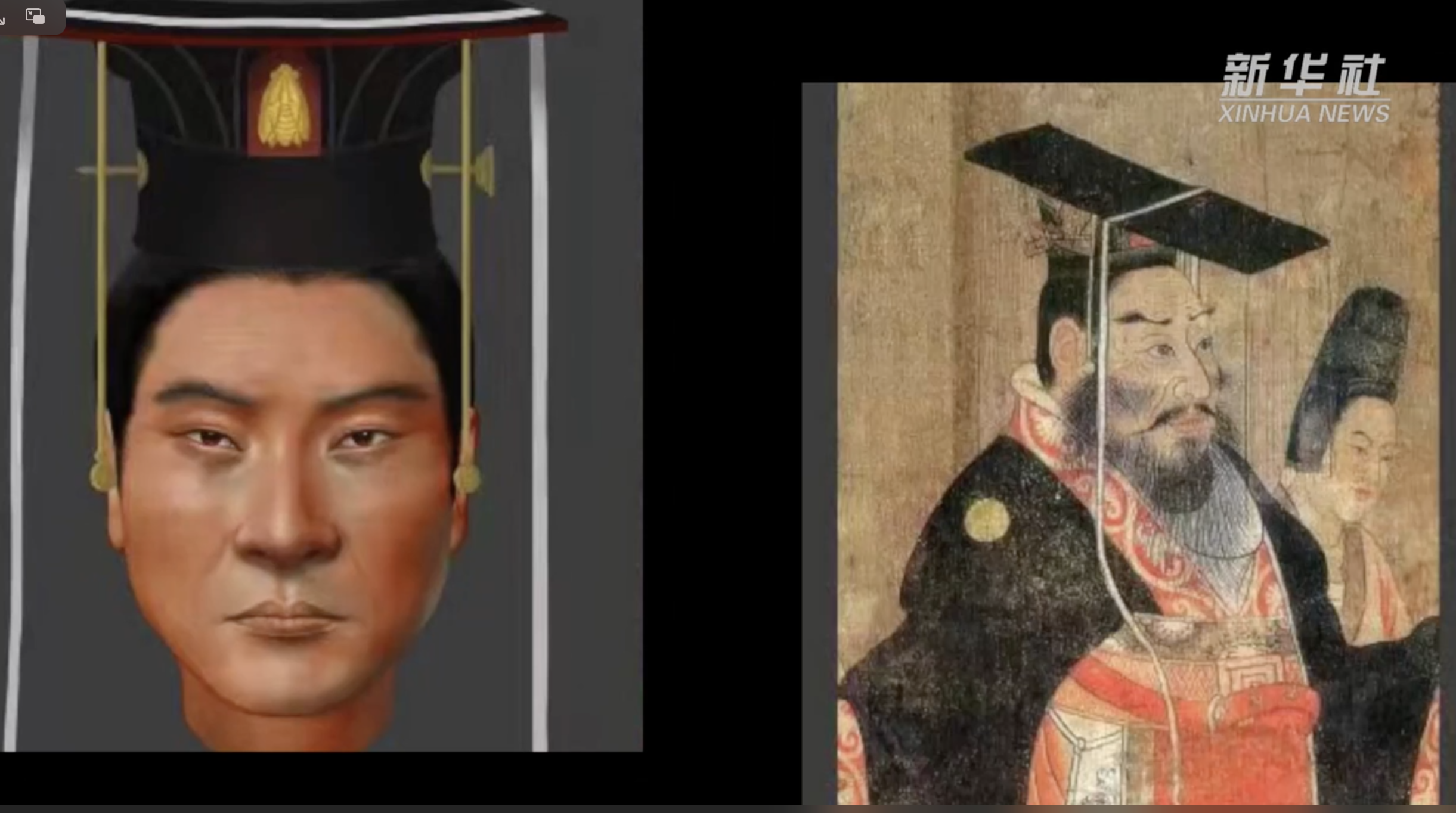http://www.xinhuanet.com/politics/20240328/3b7dc82d92a94ad7a8caacf2c421685a/c.html
https://vodpub6.v.news.cn/yqfbzx-original/20240328/5605aa0e70434a16b960c04d673ab400.mp4
https://www.cell.com/current-biology/fulltext/S0960-9822(24)00240-9
A team from Fudan University and the Shaanxi Provincial Institute of Archaeology have jointly reconstructed the facial appearance of Emperor Yu Wenyi (Wu Di) of the Northern Zhou Dynasty. According to historical records, Wu Di (543-578) unified northern China, but died young without fulfilling his ambition to pacify the Turks and secure the Jiangnan region. After his death, he was buried together with Empress Wude (Ashina) in the Xiaoling Mausoleum in Xianyang, Shaanxi Province.
Between 1994 and 1995, the Shaanxi Provincial Institute of Archaeological Research and the Xianyang Municipal Institute of Cultural Relics and Archaeology conducted an emergency excavation of the Xiaoling Mausoleum and discovered the skull, limb bones, and the seal of Empress Dowager Tianyuan of Yiwenxuan, revealing the identity of this emperor.
The team then used ancient DNA to reconstruct the face of the emperor. It was possible to recover more than one million single nucleotide polymorphisms (SNPs) in this DNA. There are more than 600 million SNPs in populations around the world. The team found SNPs that contained information about Emperor Wu’s hair and skin color. The team then used open-source Blender software to reconstruct his face as a 3D rendering. The program is based on soft-tissue depth averaging for modern Chinese people. In addition, they used the HIrisPlex-S system, which applies 41 SNPs to predict externally visible human features.
The results suggest that emperor Wu Di had brown eyes, black hair and dark to medium skin. His facial features were similar to those of people in parts of North and East Asia today.
In future research, the team plans to study the DNA of people who lived in the ancient city of Chang’an, which was the capital of several dynasties in ancient China for thousands of years, and was also located at the eastern end of the famous Silk Road, which was in the midst of an important Eurasian trade network. The team hopes that DNA analysis will reveal more data about how migration and cultural exchange unfolded in ancient China.

